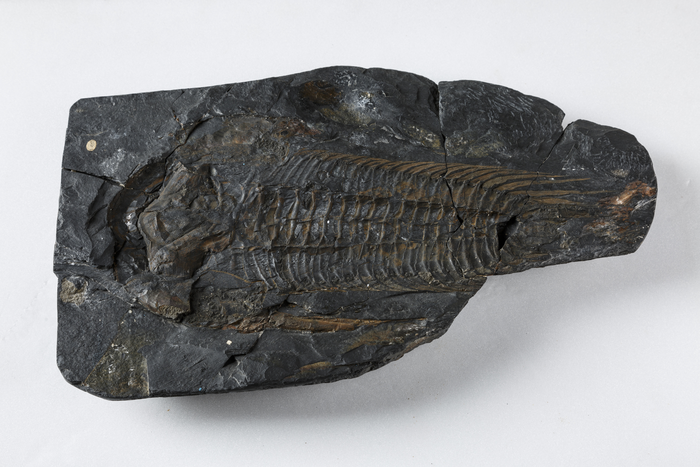Around 500 million years ago life in the oceans rapidly diversified. In the blink of an eye — at least in geological terms — life transformed from simple, soft-bodied creatures to complex multicellular organisms with shells and skeletons.

Credit: Sedgwick Museum
Around 500 million years ago life in the oceans rapidly diversified. In the blink of an eye — at least in geological terms — life transformed from simple, soft-bodied creatures to complex multicellular organisms with shells and skeletons.
Now, research led by the University of Cambridge has shown that the diversification of life at this time also led to a drastic change in the chemistry of Earth’s crust — the uppermost layer we walk on and, crucially, the layer which provides many of the nutrients essential to life.
The researchers identified that, following the so-called Cambrian explosion, quantities of the life-giving nutrient phosphorus tripled in crustal rocks — a change that supported the continued expansion of life on Earth.
“We found that ancient life had a profound impact on its environment — even to the point of resetting the chemistry of the continental crust,” said Craig Walton, lead author of the research who is from Cambridge’s Department of Earth Sciences.
Using a database of information on ancient rocks, which has been complied by scientists across the globe, the researchers built a map to show how the chemistry of Earth’s crust has fluctuated over the last 3000 million years. They found that, following the increase in phosphorus at the time of the Cambrian explosion, contents of this key-nutrient in crustal rocks have continued to grow up until the present-day.
“From about 540 million years onwards, we see that life transformed the composition of the upper part of Earth’s crust,” said co-author Oliver Shorttle, who is jointly based at Cambridge’s Department of Earth Sciences and Institute of Astronomy. “This shows how the development of life can influence the growth of further life, and in turn how much life a planet can go on to support.”
Life in all its varied forms—from the prodigious whale to minute plankton—relies on six key ingredients: carbon, hydrogen, nitrogen, phosphorus and sulfur. The researchers investigated phosphorus because it is not only universally needed by life, but also difficult to tap into because it is locked up in minerals inside Earth’s crust.
“Phosphorus is also thought to be one of the nutrients that limits the amount of life that can exist in the oceans,” said Shorttle. He explained that, by mapping out phosphorus in rocks through time, they could identify how much of this element is available to life, and, by extension, get an idea of how much life has existed on the planet.
Unlike carbon and nitrogen, which are key constituents of our atmosphere, phosphorus must be extracted out of rocks before life can use it. The process starts with the break-down of rocks due to interactions with rainwater — releasing phosphate which is then washed by rivers into the oceans. Once in the oceans, phosphorus is metabolized by organisms such as plankton or eukaryotic algae, which are then consumed by larger animals higher up the food chain.
When these organisms die, most of the phosphorus is returned back into the oceans. This efficient recycling process is a key control on the amount of total phosphorus in the ocean, which in turn supports life, “It enables us to have all the life we see around us today, so understanding when this process started is really key,” said Walton.
But, all of this biological reprocessing power relies on oxygen. This is what fuels the bacteria responsible for the breakdown of dead organic material that returns phosphorus back into the oceans.
The researchers think that a surge in oxygen at around the time of the Cambrian explosion might explain why phosphorus increased in rocks. “If oxygen did increase at that time, then more oxygen may have been available to break down deep sea biomass and recycle phosphorus to shallow coastal regions,” said Walton. Moving this phosphorus back towards the land meant it was better preserved in rocks that make up the continents. “That series of changes were ultimately responsible for fuelling the activity of complex life as we know it,” said Walton.
But, he added, “It’s tricky to unravel the sequence of events — whether complex life evolved in part because of increased supplies of oxygen and phosphorus to start with, or if they were in fact fully responsible for increasing availability of both, is still a controversial topic.” Walton and the team now looking to investigate the trigger for and timing of this phosphorus enrichment in the crust in more detail.
Journal
Science Advances
DOI
10.1126/sciadv.ade6923
Article Title
Evolution of the crustal phosphorus reservoir
Article Publication Date
5-May-2023



